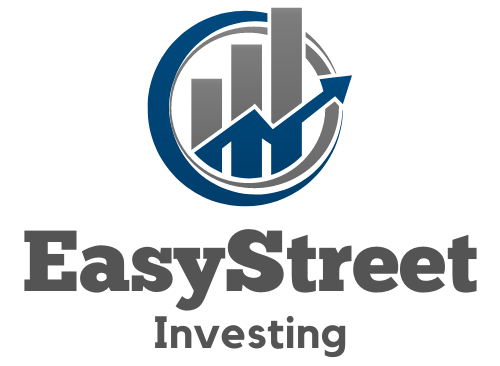In today’s investment landscape, savvy income seekers are turning their gaze to high-yield dividend stocks. These financial gems promise not just stability but a steady stream of cash that can bolster your wallet. Imagine a river of revenue, each dividend payout contributing to a growing stream of passive income. In the upcoming read, you’ll unlock the strategies to maximize returns without falling into common traps. You’ll discover how to sift through the market noise and pinpoint stocks that offer both generous dividends and potential for long-term growth.
Let’s face it; we all want our money to work harder for us. Diving into high-yield dividend stocks could be your ticket to a more lucrative portfolio. But there’s an art to it—a blend of keen insight and strategic planning. We’re talking about looking beyond attractive yields and understanding what truly makes a stock a solid choice for your income goals. Get ready to learn the ropes, from assessing company fundamentals to balancing risk with reward. Stick around, and you might just find the keys to unlock an income stream that can weather economic storms and fatten up your savings.
Important Highlights
1. Identifying high-yield dividend stocks can be a strategic approach to generate steady income, but investors must scrutinize financial health indicators like payout ratios and earnings consistency. Stocks with excessively high yields might signal underlying company issues, potentially leading to dividend cuts or stock price depreciation.
2. Diversification across various sectors is crucial in a dividend-focused portfolio to mitigate risks associated with specific industries. A mix of industries such as utilities, real estate, and consumer goods can balance exposure and provide a safety net during market downturns.
3. The role of reinvestment through Dividend Reinvestment Plans (DRIPs) can significantly enhance the compounding effect over time, accelerating wealth growth. By automatically reinvesting dividends to purchase more shares, investors harness the power of compound interest without additional out-of-pocket investment.
4. Tax efficiency should not be overlooked; qualified dividends are taxed at a lower rate compared to ordinary income, making them an attractive option for those in higher tax brackets. Investors should consult financial advisors or refer to guidelines from the Internal Revenue Service to understand the tax implications of their investments.
5. Conduct due diligence on the stability and future prospects of companies offering high dividends by analyzing their earnings reports and staying informed through reputable finance news sources like Bloomberg or The Wall Street Journal. Keeping abreast of market trends and economic indicators helps in making well-informed decisions regarding high-yield dividend stock selections.
Understanding High-Yield Dividend Stocks
High-yield dividend stocks are shares in companies that pay out larger dividends than the average stock. These dividends serve as a stream of income for investors, typically derived from well-established firms with a consistent record of distributing earnings back to shareholders. When targeting these assets, it’s crucial to assess the company’s dividend payout ratio and sustainability to ensure that high yields continue over time.
Criteria for Selecting High-Yield Dividend Stocks
Selecting the right high-yield dividend stocks involves looking at several key metrics. One essential factor is the dividend yield, which compares the annual dividend payment to the stock’s price. However, don’t chase after the highest yield without considering the company’s financial health. Examine their earnings growth, debt levels, and free cash flow to confirm if they can maintain their dividends.
Evaluating Company Financials
To truly maximize income from high-yield dividend stocks, investors should dive into a company’s financial statements. Look at revenue trends, net income, and operational efficiency. Stable or increasing figures often indicate a firm foundation for ongoing dividend payouts.
Diversification Within Dividend Stocks
A well-diversified portfolio minimizes risk while still capitalizing on returns. Split your investments across various sectors like utilities, real estate, and consumer goods—each has unique market drivers that could protect against industry-specific downturns.
Reinvesting Dividends Through DRIPs
Dividend Reinvestment Plans (DRIPs) offer a way to compound gains by automatically reinvesting dividends into additional shares of stock. This method harnesses the power of compounding interest, potentially increasing your investment significantly over time without requiring additional funds.
The Role of Tax Considerations
Taxes can take a notable bite out of your dividend income. It’s vital to understand how dividends are taxed in your jurisdiction. Some countries have favorable tax treatments for qualified dividends, which can enhance net returns.
Risks Associated with High-Yield Dividend Stocks
No investment comes without risks. Companies offering high yields may be doing so due to declining share prices or financial troubles. Always perform due diligence, checking for red flags like excessively high payout ratios that could signal unsustainable dividends.
Balancing Yield and Growth Potential
Focusing solely on yield might not be the best strategy for long-term wealth creation. Investors should also consider stocks with modest yields but significant potential for capital appreciation. A balanced approach catifies both current income needs and future growth opportunities.
Timing Your Investments Wisely
Entry and exit points can dramatically affect dividend income outcomes. Employ strategies like dollar-cost averaging to smooth out purchase prices over time or closely monitor market conditions to buy during dips when yields are more attractive.
Mitigating Risks Through Hedging Strategies
Hedging strategies such as options trading or short selling can provide downside protection for your portfolio against market volatility or economic downturns that impact high-yield stock performance.
Analyzing Industry Trends and Economic Indicators
Paying attention to broader economic indicators and industry trends is crucial when investing in high-yield dividend stocks. Sectors that thrive during economic expansions might not do as well during recessions; thus, adjust your holdings accordingly based on economic cycles and forecasts.
Leveraging Expert Analysis and Stock Screeners
To identify top-performing high-yield dividend stocks, leverage expert analysis provided by reputable financial analysts alongside advanced stock screeners designed to filter stocks based on specific criteria such as yield percentage, sector performance, and historical reliability of payouts.
Maintaining a Long-Term Perspective
It’s important for investors to maintain a long-term perspective when investing in high-yield dividend stocks. Short-term market fluctuations should not deter investors focused on steady income streams throughout retirement or other long-term financial goals.
Regular Portfolio Reviews and Adjustments
Conduct regular reviews of your portfolio to ensure alignment with changing financial objectives or market conditions. This allows you to make informed adjustments by either rebalancing or redirecting funds into better-performing assets as needed.
- How much of my portfolio should consist of high-yield dividend stocks?
- What tools can help me track my dividend income effectively?
- In what ways can I stay updated on changes affecting my chosen dividend-paying companies?
- Are there any sectors currently underperforming that might be ripe for investment due to expected turnarounds?
- What is the impact of inflation on my dividend returns and how can I mitigate it?
Frequently Asked Questions
What are high-yield dividend stocks?
High-yield dividend stocks refer to shares of companies that regularly distribute a portion of their earnings to shareholders. These payouts are typically higher than the market average, offering investors a steady stream of income.
How can these stocks maximize my income?
By investing in high-yield dividend stocks, you can receive regular dividends that can be used as a source of income. Over time, if reinvested, these dividends can compound and significantly increase your investment returns.
Are high-dividend stocks always safe investments?
No investment is without risk. While high-dividend stocks may seem attractive for their payout, it’s essential to analyze the company’s overall financial health to ensure the dividends are sustainable.
What should I look at before investing in dividend-paying stocks?
Prior to investing, examine the company’s dividend history, payout ratio, earnings stability, and future growth prospects. This will help you assess whether the dividend is likely to continue at its current rate or increase.
How often do these companies pay out dividends?
Dividends are usually paid quarterly, but some companies may opt for monthly, semi-annual, or annual distributions. It’s important to check the payment schedule for each stock you consider.
Can I live off of dividend income?
If you have a substantial portfolio invested in a diverse range of high-yield dividend stocks, it could be possible to live off the income. However, this depends on your living expenses and the total value of your investments.
Does stock price affect dividend yield?
Absolutely. Dividend yield is calculated by dividing the annual dividend per share by the stock’s price per share. Hence, if the stock price falls, the yield goes up, assuming the dividend remains constant.
What is a ‘dividend trap’ and how can I avoid it?
A ‘dividend trap’ occurs when an investor is lured into buying a stock with a high yield that is not sustainable. To avoid this, research beyond just yield figures—look into payout ratios and trends in earnings.
Is it better to invest in individual stocks or dividend-focused ETFs?
This decision largely depends on your comfort with individual stock analysis and portfolio diversification needs. ETFs offer immediate diversification and lower risk compared to individual stocks.
How does reinvesting dividends work towards maximizing income?
Reinvesting dividends allows you to purchase additional shares without spending more money. This increases your share count over time and can lead to exponential growth due to compounding effects.
Closing Insights on Building Wealth with High-Yield Dividends
Incorporating high-yield dividend stocks into your portfolio can be an effective strategy for enhancing your income streams. However, exercising due diligence and maintaining a diversified investment approach are crucial when selecting these assets. By focusing on companies with strong fundamentals and sustainable payouts, you position yourself for long-term financial success through both passive income and potential capital appreciation.
Relying solely on dividends might not suit everyone’s financial goals or risk tolerance. Therefore, it’s important to align this strategy with your broader investment objectives and seek professional advice if necessary. Remember that while high yields are tempting, quality should never take a backseat in pursuit of short-term gains.

